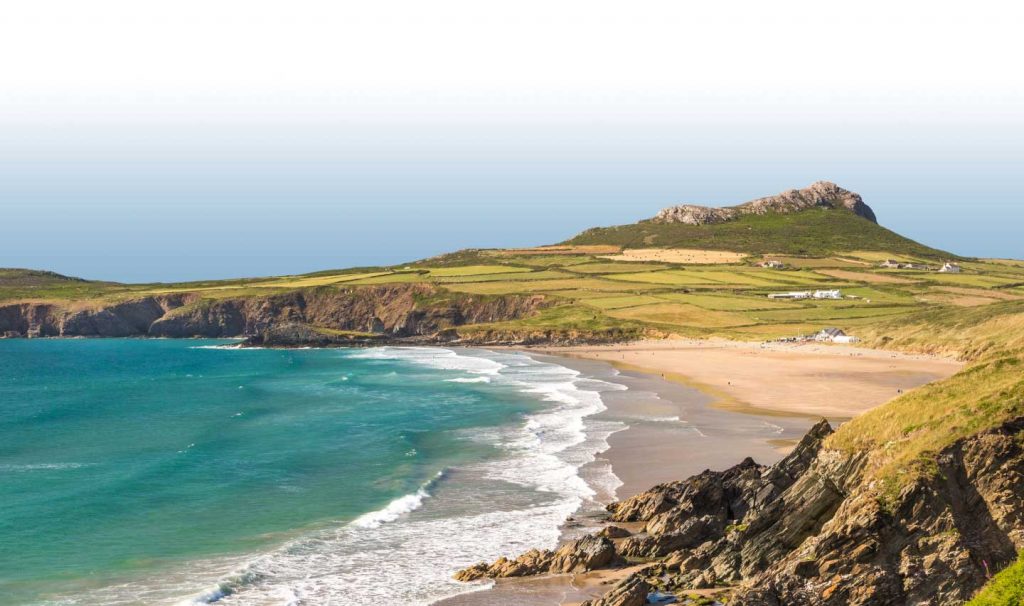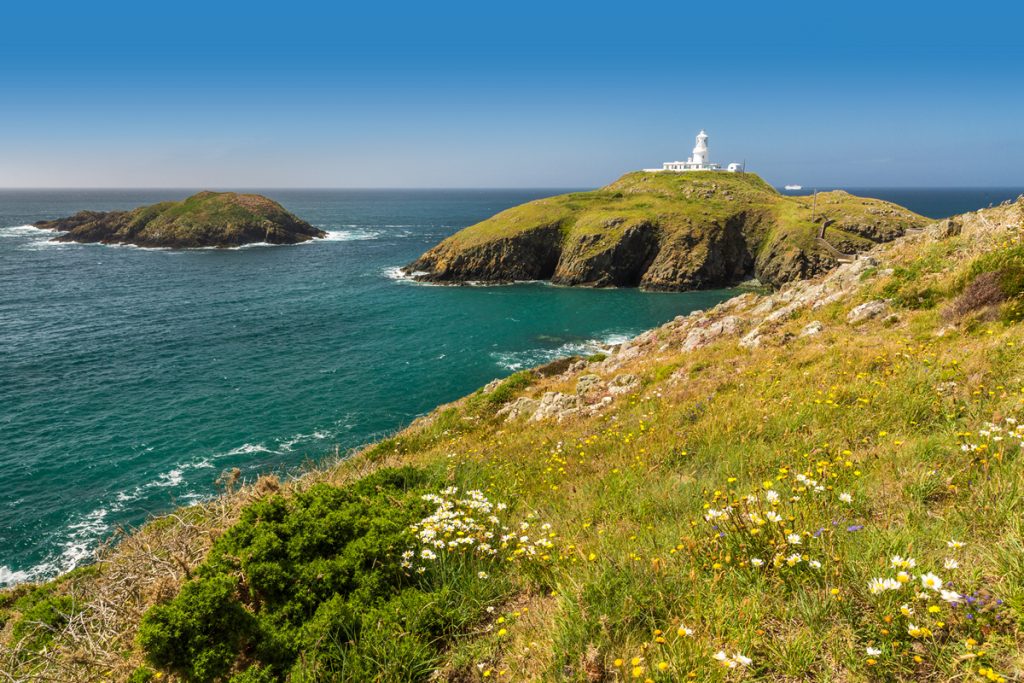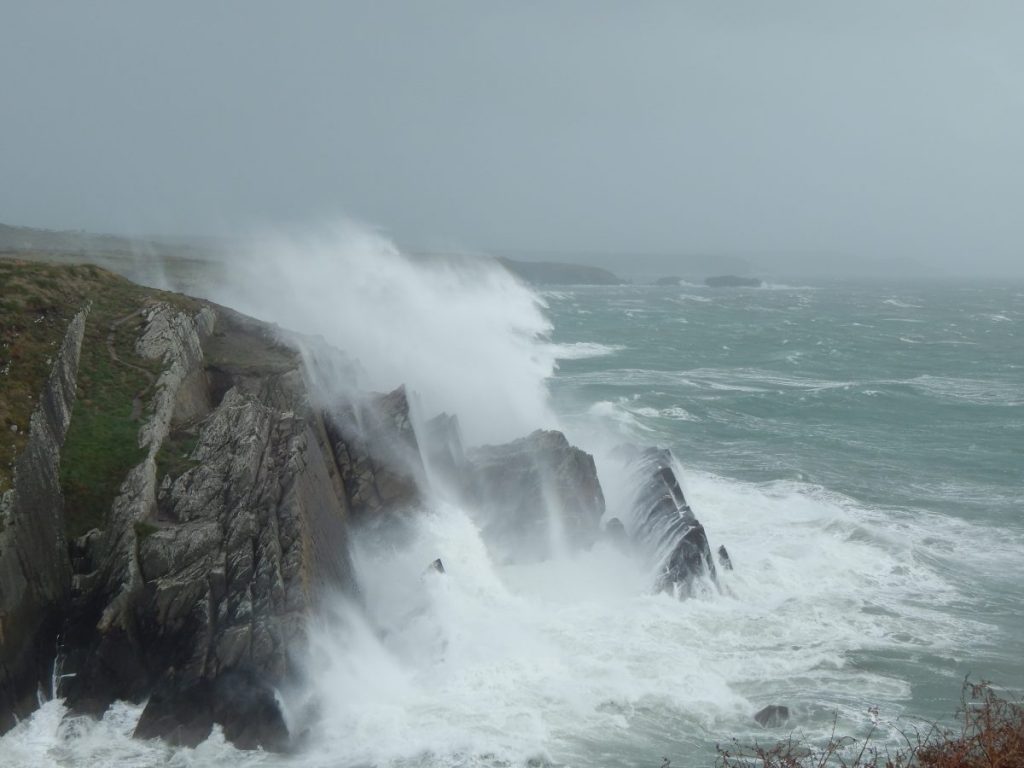You will often hear it said that isolated craggy hills like Carn Llidi and Penbiri near Whitesands Bay or Garn Fawr on Strumble Peninsula are the eroded remnants of old volcanoes.
Whilst there is an element of truth in these statements – the rocks did indeed form when molten rock cooled and crystallised – there is no relationship between the form and rock type of these hills with those of actual volcanoes.
These great rock masses seen in the National Park were originally magma that cooled and crystallised at varying depths, within a great thickness of mud and ash that was accumulating in a deep basin on the sea floor.
The highest hill on Ramsey Island, Carn Llundain, certainly looks like a volcano, but you’re going to be very disappointed if you expect to find a smoking crater at the top (never mind, the view from here is possibly the best in Pembrokeshire).
The inclined layers of rocks that underlie this hill are mostly thick accumulations of ash and larger fragments that accumulated on the seabed during very violent underwater eruptions. So not a volcano at all!
Volca-no?
They’re therefore not remnants of extinct volcanoes, but igneous intrusions – mostly sills, formed when molten rock pushed and melted its way between other layers – that have subsequently been exposed by weathering and erosion.
The slow cooling of the mostly basic magmas led to the development of large crystals, which would not be present in a rock formed from an outpouring of lava.
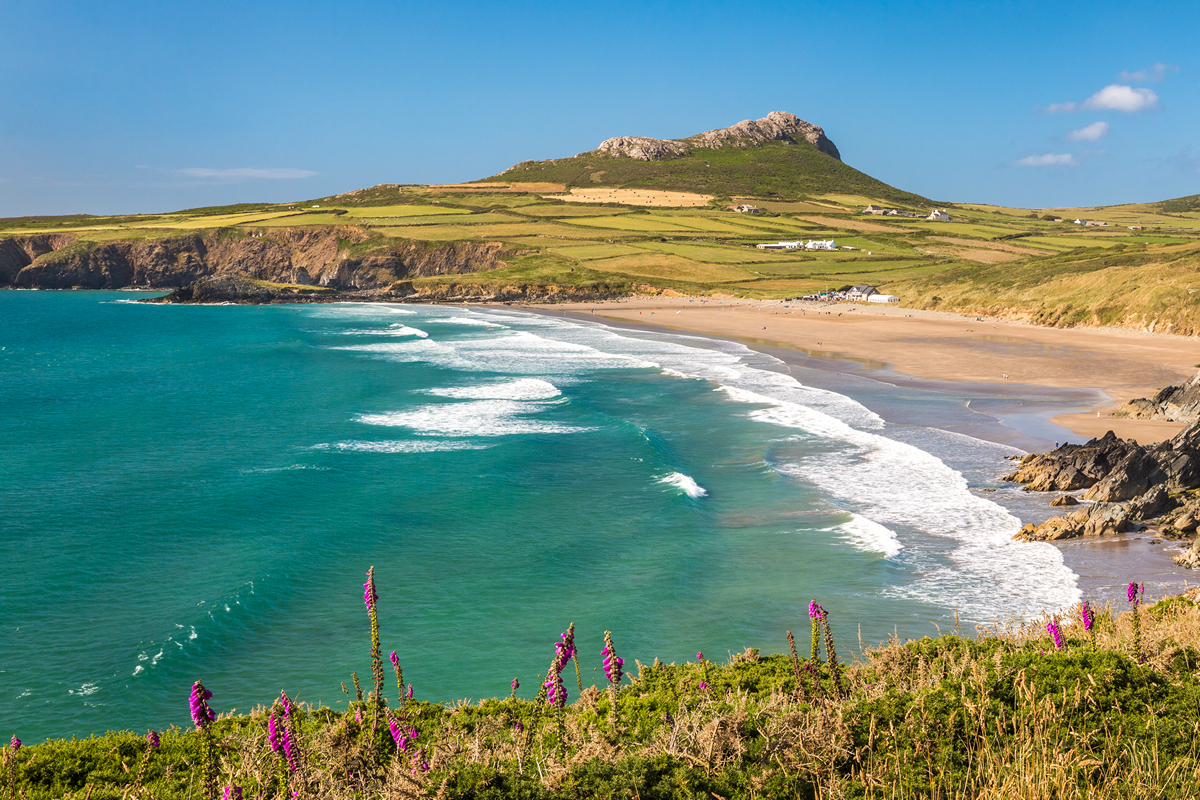
Continental Drift
Another important thing to consider is that these rocks were formed around 470 million years ago, and in a location comparable to the present position of the Antarctic Peninsula. At that time the configuration of continents bore no relation to those we see today.
These rocks have reached their present position (around 9,000 miles from where they began their journey) by the process of continental drift (movement of the ‘plates’ that make up the Earth’s crust).
What we see today is a small fragment of an ancient ocean floor that has been fitted into the mosaic of rocks that is now Pembrokeshire. During this time there is also ample evidence of volcanic activity, but it mostly occurred as submarine eruptions, although occasionally enough material may have accumulated to form a volcanic island.
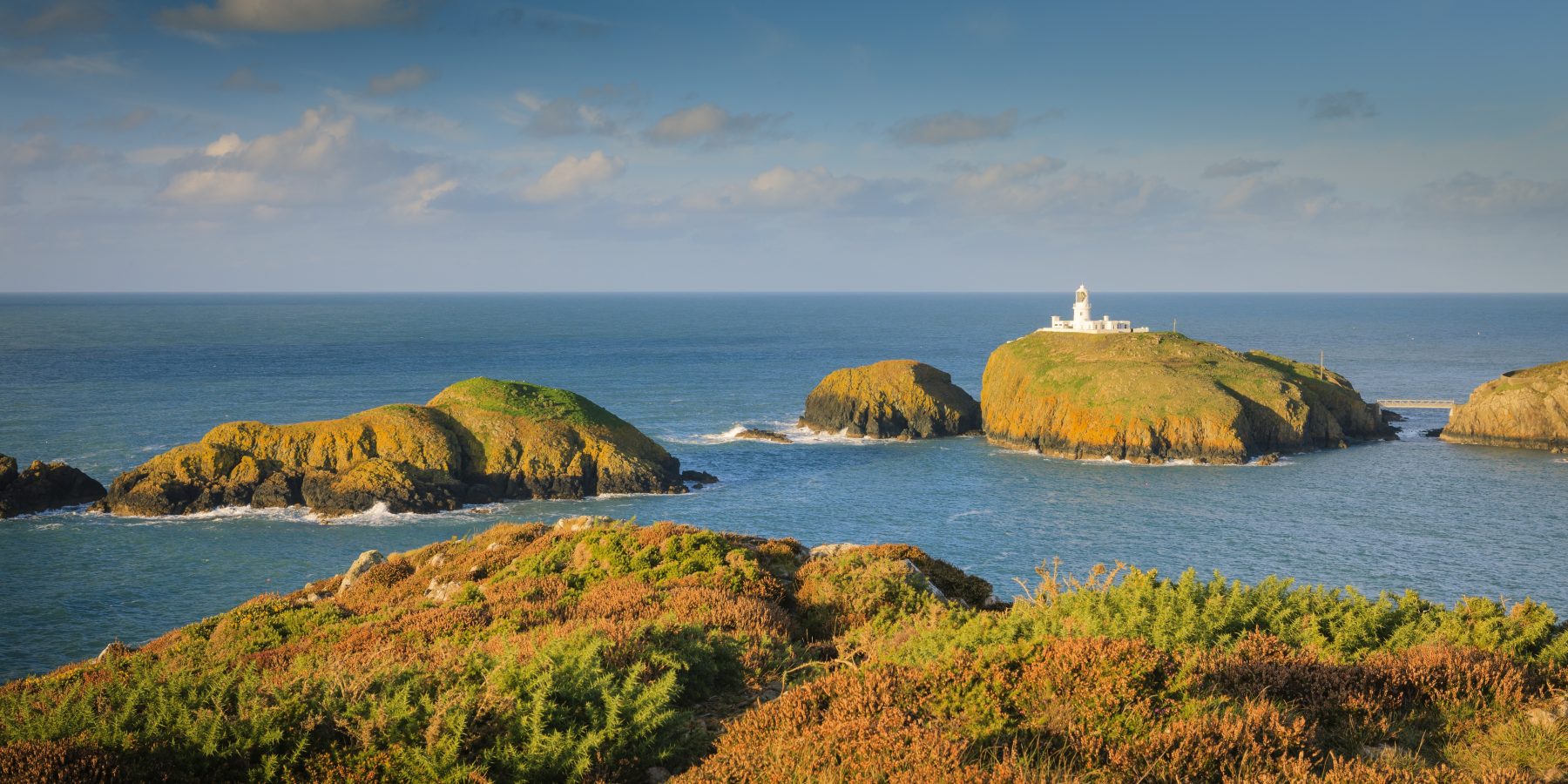
Pillow Lavas
Much of the area around Strumble Head is composed of pillow lavas. These basalts erupted relatively passively in deep water.
So although Pembrokeshire’s spectacular landscape is indeed the result of volcanic activity, we can’t quite claim to have Tracey Island style volcanoes or craters.
However thanks to the volcanic activity, we have been left with a rich geological landscape that is every bit as exciting and dramatic as any episode of Thunderbirds.
